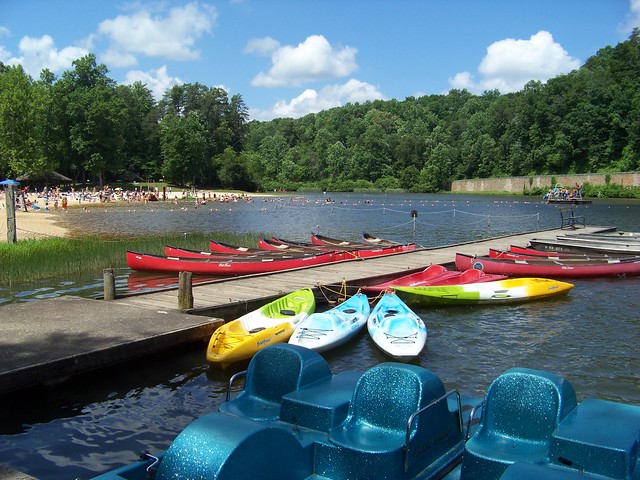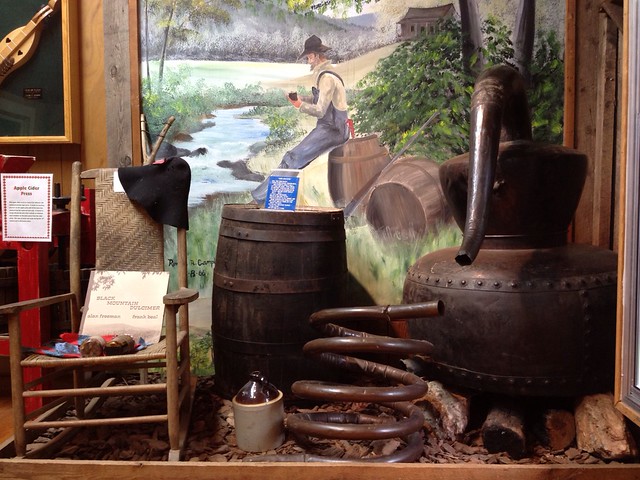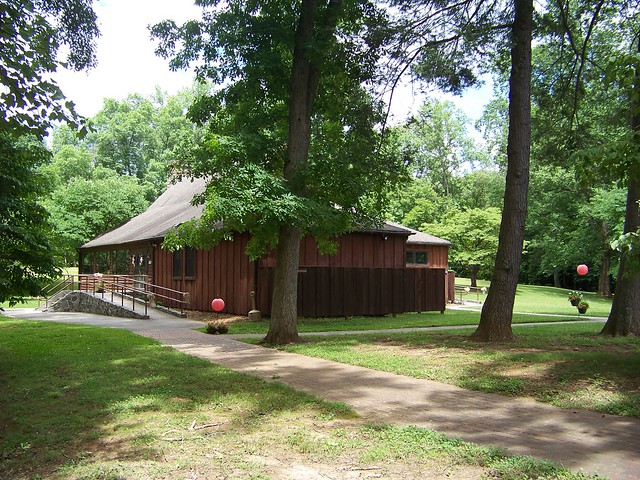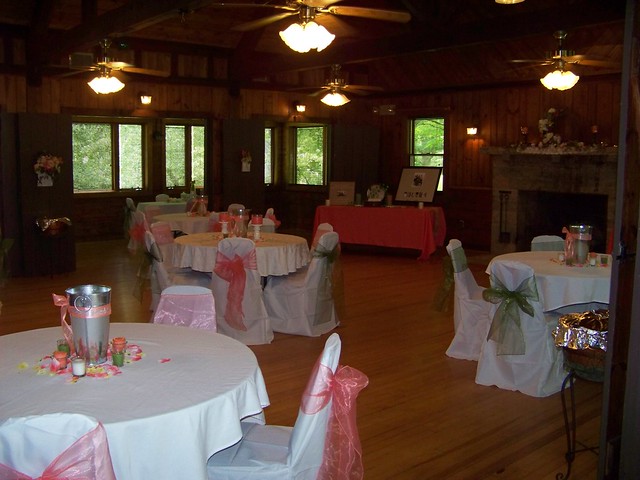If these hills could talk, what stories might they tell? There would be tales of times gone by, of families who struggled to build a life from this land, through both boom times and economic hardship. Sometimes it can be difficult to separate the folklore from the facts.

The town of Fayerdale was flooded in the 1930s to create Fairystone Lake
Once upon a time, these hills that bring visitors to hunt for “fairy stones” at Fairy Stone State Parkwere once a major source of iron ore. It is said that iron used for manufacturing the Confederate ironclad Virginia (otherwise known as the Merrimac) came from here. While this is not confirmed by historical records, we do know that mining on Stuart’s Knob has a long history. Initially the ore was removed through surface mining. Later, when surface ore became scarce, horizontal shafts were put in place by the Union Iron Works, owned by the Hairston family.

Along the Iron Mine Trail, visitors can see an old mine shaft
The community that developed around the mine was originally known as Iron Furnace. In 1905, the mine was acquired by new owners who also gave the town a new name, Fayerdale. During the early 1900s the town of Fayerdale boomed around the mining and logging operations there, along with related industries such as blacksmithing. Cable cars on a tramway carried the ore to a processing plant located at the foot of the mountain, where it was then shipped out by railroad.

A copper moonshine still is on display in the park visitor center
In the early 1920’s, the mining and logging operations began to decline. According to historical accounts, it was around this time that many families began to move away, seeking employment elsewhere. Others turned to illegal liquor production as a means of putting food on the table, and the area became known for its moonshining activity. Area residents still talk about “the Fayerdale tragedy,” a dispute in which some of the moonshiners turned on each other, resulting in more than one death.
In 1933, the Civilian Conservation Corps (CCC) was formed. The CCC went to work building Virginia’s original six state parks, among many other public works projects. Roanoke newspaper publisher Junius B. Fishburn donated the 4,639-acre site for Fairy Stone State Park, making it the largest of the six original parks and one of the largest to this day. The former town of Fayerdale was flooded to make way for the parks 168-acre lake. The rest is history.
Today, visitors to the park can find many reminders of days gone by. The park visitor center contains a moonshining exhibit with an authentic copper still, while the Whisky Run Trail pays homage to those days gone by. One of the old mine shafts can be seen along the Iron Mine Trail. Many of the original CCC structures are still in use, including cabins and picnic shelters.

Fayerdale Hall Conference Center takes its name from the town under the lake.

Fayerdale Hall is a popular venue for weddings and other gatherings
One of the original CCC buildings now serves as the Fayerdale Hall Conference Center. Formerly the park’s restaurant, this facility was named for the town under the lake. The building has been upgraded with modern conveniences including Wi-Fi, a flat screen TV, and catering kitchen, making it a popular venue for weddings and meetings.
click here, or call 1-800-933-7275.
Its address is 967 Fairystone Lake Drive, Stuart, VA 24171-9588; Latitude, 36.792468. Longitude, -80.116840.
Drive Time : Northern Virginia and Washington, D.C., six hours (from Washington, DC); Richmond, four hours; Tidewater/ Norfolk/Virginia Beach, five hours; Roanoke, one hour
Learn more history, and make your own, with a visit to Fairy Stone State Park this year.
